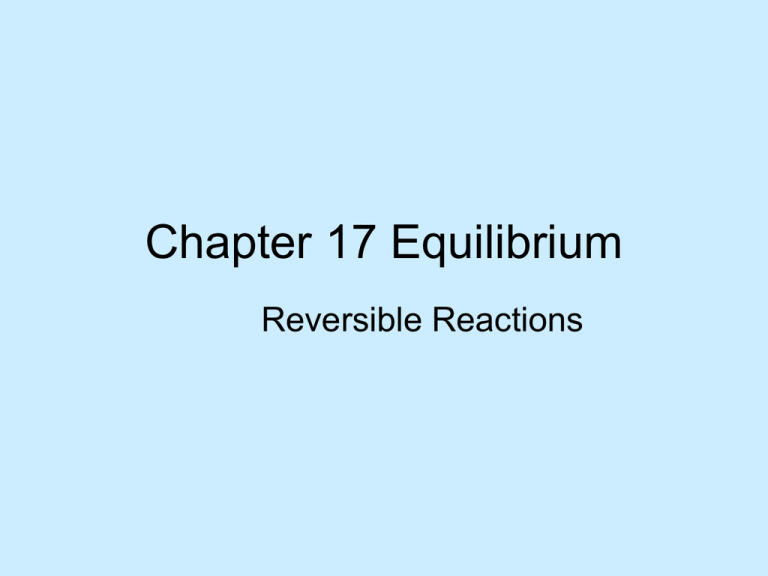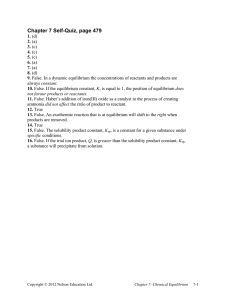Equilibrium
advertisement

Chapter 17 Equilibrium Reversible Reactions Collision Model • Chemical reactions occur because of collisions between reactants. • In that collision old bonds are broken and new bonds are formed. • Not all collisions are effective in causing a reaction. Factors That Effect Collisions • Collision Frequency – Increase in frequency increases the rate of the reaction. Increased pressure or increased temperature. • Collision Energy – A minimum kinetic energy is required but too much energy is also detrimental. • Collision Geometry – Molecules must be oriented in the proper geometry for a reaction to occur. Factors Effecting Reaction Rate • Reaction Concentration – Increasing concentration increases the chance of collisions and thus speeds up the reaction • Reaction Temperature – Increasing temperature increases particle kinetic energy which speeds up most reactions • Addition of a Catalyst – A catalyst lowers activation energy and thus speeds up the reaction. Role of a Catalyst Enzymes • Every raw food contains exactly the right quantities and types of enzymes necessary to digest that particular food. For example, fruits high in carbohydrates , such as apples, contain high amounts of amylase. • Like Catalysts, they increase the rate of chemical reactions without themselves being consumed. • Secondly like Catalysts, they increase reaction rates without altering the chemical equilibrium between reactants and products. Chemical Equilibrium • Most chemical reactions do not continue until all of the reactant is used up. • At first the forward reaction proceeds quickly. • As the amount of product builds, a reverse reaction starts to occur as products collide and form reactants. • When the forward and reverse reactions occur at the same rate, equilibrium is established. • The concentration of products and reactants remain the same. Concentration Graphs Equilibrium Constant • There is a mathematical value which indicates when equilibrium is established. • The Law of Chemical Equilibrium states that the molar concentrations of the products divided by the molar concentration of the reactants equals a constant value, Kc. • If Kc >> 1 the reaction goes to near completion. • If Kc << 1 equilibrium is quickly established in the system. Equilibrium Constant Equilibrium Constant • For the values plugged into the equation for Kc: – Gases are entered as their pressure – Aqueous solutions are entered as their molar concentrations – Liquids and solids are not entered in the equation as they do not affect equilibria in heterogeneous systems.






